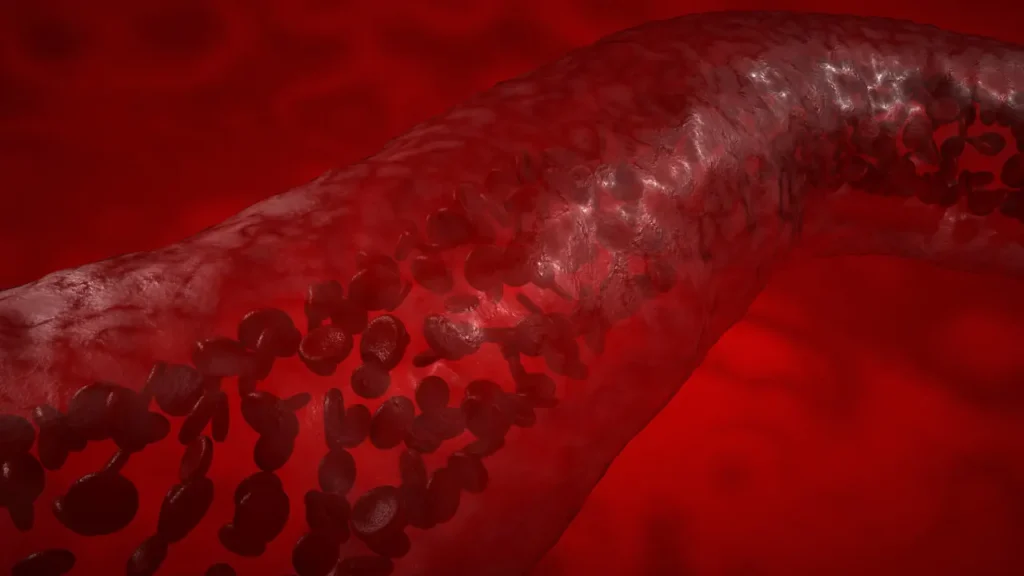There is a perennial plant known as Angelica, which is a member of the Apiaceae family. It is frequently used in traditional medicine to treat a variety of illnesses. For its therapeutic qualities, the plant has been utilized for millennia in China, Korea, and Japan. Due to its health advantages, Angelica has recently become more widely used outside of East Asian countries and used as a dietary supplement in Western nations. The goal of this article is to give readers a thorough overview of Angelica, including its nature, health advantages, recommended dosage, negative effects, possible drug interactions, and appropriate usage.
You May Also Like:
Should You Try CBD for Focus? Here Are the Facts.
CBD for Concentration: 3 Epic Benefits that Boost Your Focus
ANGELICA: Benefits, Dosage, Side Effects, Drug Interactions, And Other Important Information is an original (NootropicsPlanet) article.
Nature of Angelica:
A native of East Asia, Angelica is a plant that is frequently found in China, Korea, and Japan. The plant is also known as female ginseng or dong quai. Growing to be up to 6 feet tall, Angelica has a hollow stem with broad, umbrella-shaped leaves. The plant produces small white or greenish-yellow flowers in clusters, and they bloom from late spring to early summer. The portion of the plant that is utilized medicinally is its root.
Health Benefits of Angelica:
For generations, Angelica has been used in traditional medicine to treat a variety of illnesses, including those that affect women’s reproductive systems, their hearts, and their immune systems. Some of the traditional applications of Angelica have been supported by contemporary research, which has also uncovered other potential health advantages. The following are a few of Angelica’s health advantages:
- Women’s Reproductive Health: In traditional Chinese medicine, Angelica is frequently used to control menstrual cycles, lessen menstrual cramps, and ease menopausal symptoms. According to recent studies, Angelica may aid to maintain a healthy level of estrogen and enhance pelvic blood flow.
- Cardiovascular Health: Angelica lowers blood pressure and cholesterol levels. The plant has substances that aid in dilating blood arteries, enhancing blood flow, and preventing blood clots.
- Immune System Support: Compounds in Angelica increase immune cell activation and decrease inflammation. The plant may also lessen the intensity of allergic reactions and aid in infection protection.
- Digestive Health: In traditional medicine, Angelica has been used to treat digestive issues like indigestion, bloating, and constipation. Due to its ability to increase the generation of digestive enzymes and the development of good gut flora, Angelica may aid in the improvement of digestive function.

Chemistry of Angelica:
Because of its intricate chemical makeup, Angelica provides medical benefits. The plant contains coumarins, phthalides, polysaccharides, and essential oils, among other kinds of chemicals.
- Coumarins: Osthole, bergapten, and imperatorin are just a few of the coumarins found in Angelica. Coumarins have anticoagulant and vasodilatory properties that can enhance blood flow and stop blood clots from forming.
- Phthalides: The phthalides ligustilide, senkyunolide A, and Z-ligustilide are all present in Angelica. Menstrual cramps and other kinds of muscle pain can be lessened by the muscle-relaxing properties of phthalides.
- Polysaccharides: Angelica’s chemical make-up includes angelicopolysaccharides A and B among its many polysaccharides. Polysaccharides have immuno-stimulating properties that can increase immune cell activity and promote immune system performance.
- Essential oils: The essential oils in Angelica include limonene, alpha-pinene, and beta-pinene. Due to the analgesic and anti-inflammatory properties of essential oils, they can alleviate pain and inflammation.
Physiological Mechanism of Action:
Angelica has a variety of physiological pathways by which it can be therapeutic. Some of Angelica’s physiological methods of action include the following:
- Anticoagulant Effects: The coumarins in Angelica hinder the blood’s ability to produce clotting proteins, which can stop blood clots from forming.
- Vasodilatory Effects: Angelica contains coumarins, which expand blood vessels and lower blood pressure while enhancing blood flow.
- Muscle-Relaxing Effects: Angelica contains phthalides that have muscle-relaxing properties that can aid to ease tension in the muscles and lessen spasms.
- Immunological-Stimulating Effects: Angelica’s polysaccharides stimulate immunological cells including macrophages and natural killer cells, which are essential for the body’s defense against cancer and infections.
- Anti-inflammatory and Analgesic Properties: Angelica essential oils have anti-inflammatory and analgesic properties that can reduce inflammation and ease pain.


Optimal Dosage of Angelica:
The ideal amount of Angelica for you to take depends on a number of variables, including age, weight, health, and the intended purpose. There is no established dosage for Angelica; thus, a medical expert should decide on the right amount to use. Generally speaking, Angelica can be consumed as a tea, tincture, pill, or powder. The following are some typical dose recommendations for Angelica:
- Tea: Steep a cup of hot water with 1-2 teaspoons of dried Angelica root for 10-15 minutes. Consume 1-3 cups daily.
- Tincture: Take 2-3 times daily 30–60 drops of diluted Angelica tincture in water.
- Capsule: 1-2 times day, take 500–1000 mg of Angelica root extract.
- Powder: Consume 1-2 g of powdered Angelica root, two or three times daily.
To prevent any adverse effects, it is crucial for you to adhere to the advised dosage advice and not go overboard.
Side Effects of Angelica:
When used at the proper doses, Angelica is usually regarded as safe. However, the herb may have adverse consequences in certain people, particularly if used for a prolonged length of time or in excessive dosages. Some of Angelica’s probable negative effects include the following:
- Sun sensitivity: Angelica includes substances that may increase a person’s skin’s sensitivity to sunlight. When taking Angelica, users should avoid the sun for long periods of time or wear sunscreen.
- Gastric distress: In some people, consuming Angelica may result in nausea, vomiting, and diarrhea.
- Allergic reactions: Some people, particularly those who have a history of allergies to plants in the Apiaceae family, may experience an allergic reaction to Angelica.
- Medication interactions: Angelica may interact with some drugs, including immunosuppressants, hormone treatments, and blood thinners. Before taking Angelica, people who are on medications should speak with their doctors.
- Pregnancy and breastfeeding: Due to its potential effects on hormonal balance and a lack of standardized safety information, Angelica should be avoided during pregnancy and breastfeeding.


Potential Substance Interactions with Angelica:
Certain drugs and supplements may interact with Angelica, which may have negative effects or lessen the efficacy of the drug or supplement. The following substances may interact with Angelica in the following ways:
- Blood thinners: The effects of blood thinners like aspirin and warfarin, which increase the risk of bleeding, may be exacerbated by Angelica.
- Hormone therapies: Angelica may influence estrogen levels in the body, which may affect interactions with hormone treatments including hormone replacement therapy and birth control tablets.
- Immunosuppressants: Angelica has been shown to interact with immunosuppressant drugs like cyclosporine and corticosteroids by stimulating the immune system.
- Herbal supplements: Garlic and ginkgo biloba, two herbs that alter blood coagulation, may interact with Angelica.
Responsible Uses of Angelica:
Angelica should only be used sensibly and under a doctor’s supervision. Angelica should not be used for self-diagnosis or treatment without first consulting a healthcare professional. It is important that you adhere to the advised dosage and prevent any possible drug or supplement interactions. Angelica shouldn’t be used in place of professional medical care for any health issue.
ANGELICA:
Conclusion
In modern times, many parts of the world that previously had little contact are able to share information more freely and easily. Some of the information shared includes different cultures’ approaches to health and medicine. Western cultures are now privy to treatments from other parts of the world, including East Asia. Angelica has been used for many generations in Asia to treat a variety of health ailments. Now, there is western scientific research to corroborate what many Asian people have known for years: Angelica is a plant with roots that can be transformed into a variety of forms that support improved health.


References:
- “Effect of Angelica polysaccharide on mouse myeloid-derived suppressor cells.” Retrieved from: https://pubmed.ncbi.nlm.nih.gov/36159871/
- “New insights into the phylogeny of Angelica and its allies (Apiaceae) with emphasis on East Asian species, inferred from nrDNA, cpDNA, and morphological evidence.” Retrieved from: https://www.researchgate.net/profile/Stephen-Downie/publication/260140438_New_Insights_into_the_Phylogeny_of_Angelica_and_its_Allies_Apiaceae_with_Emphasis_on_East_Asian_Species_Inferred_from_nrDNA_cpDNA_and_Morphological_Evidence/links/54f4729d0cf2f9e34f0a442b/New-Insights-into-the-Phylogeny-of-Angelica-and-its-Allies-Apiaceae-with-Emphasis-on-East-Asian-Species-Inferred-from-nrDNA-cpDNA-and-Morphological-Evidence.pdf
- “Identification of non-alkaloid natural compounds of Angelica purpurascens (Avé-Lall.) Gilli. (Apiaceae) with cholinesterase and carbonic anhydrase inhibition potential.” Retrieved from: https://www.sciencedirect.com/science/article/pii/S1319016419301343
Important Note: The information contained in this article is for general informational purposes only, and should not be construed as health or medical advice, nor is it intended to diagnose, prevent, treat, or cure any disease or health condition. Before embarking on any diet, fitness regimen, or program of nutritional supplementation, it is advisable to consult your healthcare professional in order to determine its safety and probable efficacy in terms of your individual state of health.
Regarding Nutritional Supplements Or Other Non-Prescription Health Products: If any nutritional supplements or other non-prescription health products are mentioned in the foregoing article, any claims or statements made about them have not been evaluated by the U.S. Food and Drug Administration, and such nutritional supplements or other health products are not intended to diagnose, treat, cure, or prevent any disease.
